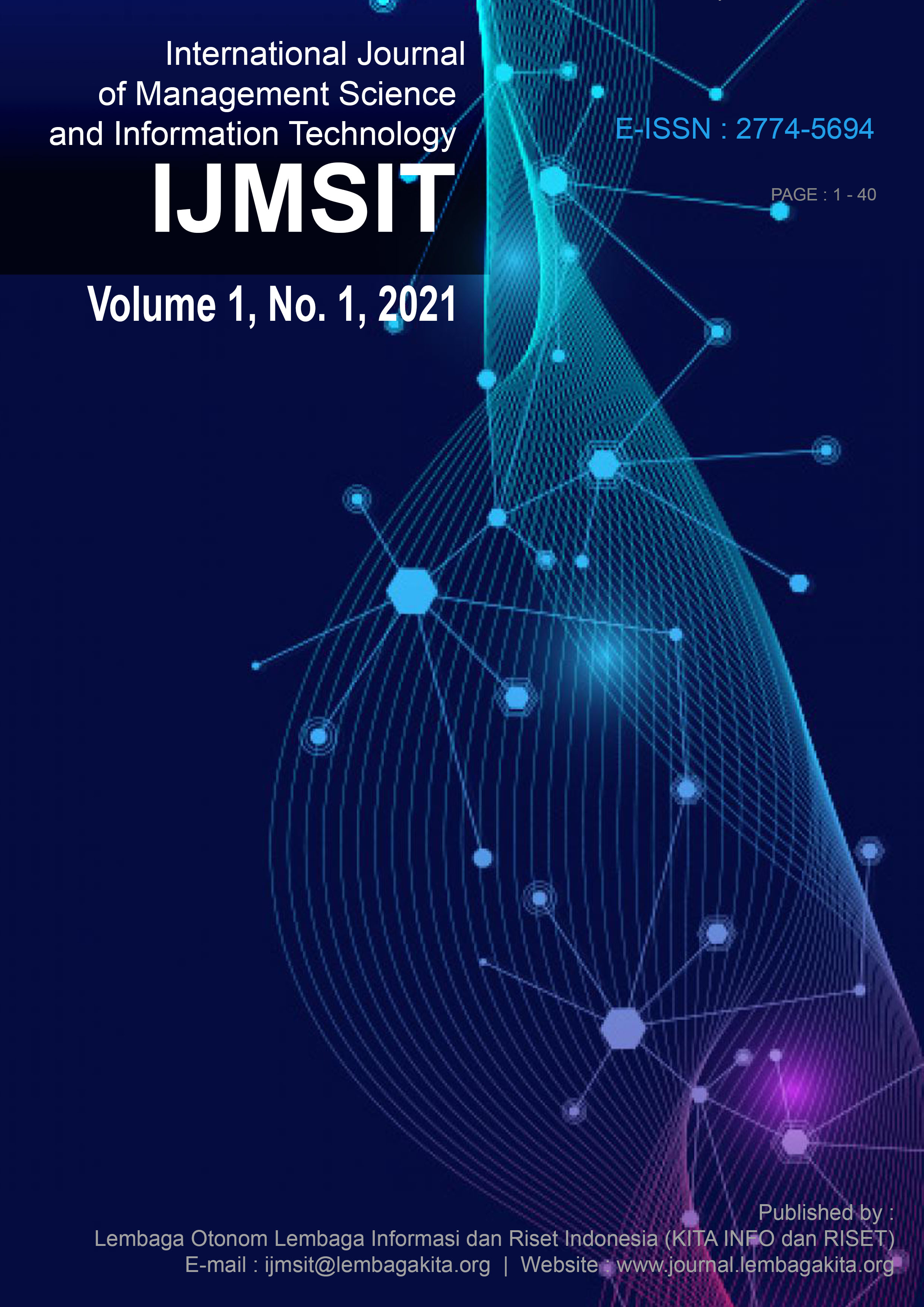Optimization of Debtor Information Systems in Pressing Problem Financing in Some Syari'ah BPR in Aceh Province
DOI:
https://doi.org/10.35870/ijmsit.v1i1.228Keywords:
Bad Credit / Financing, Information Systems, Debtor, Bank competitivenessAbstract
Article 1 paragraph (1) of Law Number 10 the Year 1998 states that banking is a financial institution that collects funds from the public in the form of savings, time deposits, and demand deposits and which can be equated with them. Furthermore, it is channeled back to the public in the form of credit (financing in the Syari'ah Bank), with the aim of achieving people's welfare. Furthermore, based on Law Number. 21 of 2008 explains that a Syari'ah bank is a bank financial institution that runs its operations in a Shari'ah manner. One of the duties of banking institutions is to channel credit/financing to the public so that it can spur economic growth in the informal sector in the Region and National in the context of the Unitary State of the Republic of Indonesia. In the provision of credit/financing, it is not uncommon for fraudulent (internal) practices carried out by loan officers (AO / FO), finance staff, so that they can worsen Non-Performing Loans / Financing, which in turn can undermine the bank's own capital. The debtor information system is a strategic effort to minimize the occurrence of non-performing loans so that the quality of financing can still be controlled at all times. The collectability of financing can also be used as a benchmark in increasing the competitiveness and selling value of a bank. The purpose of this study is to determine the extent to which banking institutions, in this case, the Islamic People's Financing Bank have implemented these provisions, what obstacles were found, and efforts to resolve them. This type of research is an Empirical Juridical, namely examining the Regulations governing Anti Money Laundering (APU) and the Prevention of Terrorism Funding (PPT) as well as Debtor Information within the scope of the financing process in several Sharia Rural Banks (BPRS) in Aceh Province. Based on research in eleven Sharia People's Financing Banks in Aceh Province, it is known that 68.3% have operational procedures (sop) on AML and CFT and run them well, while 31.7% have AML and CFT regulations, but have not implemented them optimally. . The reason why this provision has not been implemented optimally is that more intensive socialization is needed to related parties, including bank debtors, considering that debtors are prime customers in growing a bank.Downloads
References
Munir Fuady, Hukum Perbankan Modern, Edisi ketiga, PT. Citra Aditya Bakti, Bandung, 2015
Soerjono Soekanto, Penelitian Ilmu Hukum, Universitas Indonesia, Jakarta. 1988
Undang-Undang Republik Indonesia Nomor 10 Tahun 1998, tentang Perubahan Atas Undang Undang Nomor 7 Tahun 1992 tentang Perbankan, Lembaran Negara Tahun 1998, Nomor. 182
Undang-Undang Republik Indonesia Nomor 21 Tahun 2008, tentang Bank Syari’ah, Lembaran Negara Tahun 2008, Nomor. 784
Santoso, Rudi (2013). Kelembagaan Perbankan. Gramedia.Jakarta
Rizal, S., & Munawir, M. (2017). Pengaruh Kepuasan Nasabah Terhadap Menggunakan Mobile Banking (M-Banking) Pada Bank BCA Cabang Banda Aceh. Jurnal EMT KITA, 1(2), 68-78.
Munawir, M., & Ardiansyah, A. (2017). Decision Support System Pemilihan Karyawan Berprestasi Dengan Pendekatan Analisa Gap Profile matching Di Kantor Perwakilan Bank Indonesia Provinsi Aceh. Jurnal JTIK (Jurnal Teknologi Informasi dan Komunikasi), 1(1), 7-14.
Downloads
Published
Issue
Section
License
Copyright (c) 2021 International Journal of Management Science and Information Technology

This work is licensed under a Creative Commons Attribution-NonCommercial-NoDerivatives 4.0 International License.
Copyright and Licensing Agreement
Authors who publish with this journal agree to the following terms:
1. Copyright Retention and Open Access License
- Authors retain full copyright of their work
- Authors grant the journal right of first publication under the Creative Commons Attribution 4.0 International License (CC BY 4.0)
- This license allows unrestricted use, distribution, and reproduction in any medium, provided the original work is properly cited
2. Rights Granted Under CC BY 4.0
Under this license, readers are free to:
- Share — copy and redistribute the material in any medium or format
- Adapt — remix, transform, and build upon the material for any purpose, including commercial use
- No additional restrictions — the licensor cannot revoke these freedoms as long as license terms are followed
3. Attribution Requirements
All uses must include:
- Proper citation of the original work
- Link to the Creative Commons license
- Indication if changes were made to the original work
- No suggestion that the licensor endorses the user or their use
4. Additional Distribution Rights
Authors may:
- Deposit the published version in institutional repositories
- Share through academic social networks
- Include in books, monographs, or other publications
- Post on personal or institutional websites
Requirement: All additional distributions must maintain the CC BY 4.0 license and proper attribution.
5. Self-Archiving and Pre-Print Sharing
Authors are encouraged to:
- Share pre-prints and post-prints online
- Deposit in subject-specific repositories (e.g., arXiv, bioRxiv)
- Engage in scholarly communication throughout the publication process
6. Open Access Commitment
This journal provides immediate open access to all content, supporting the global exchange of knowledge without financial, legal, or technical barriers.












